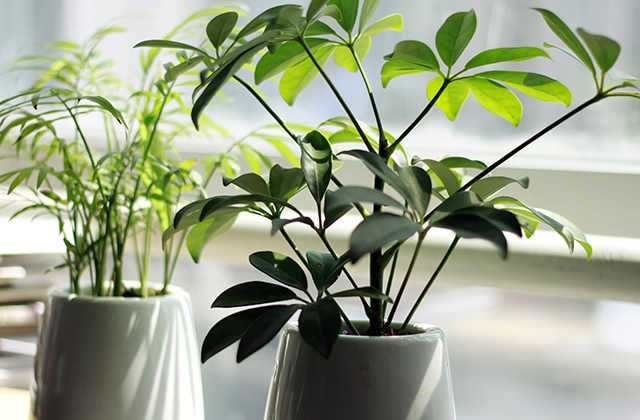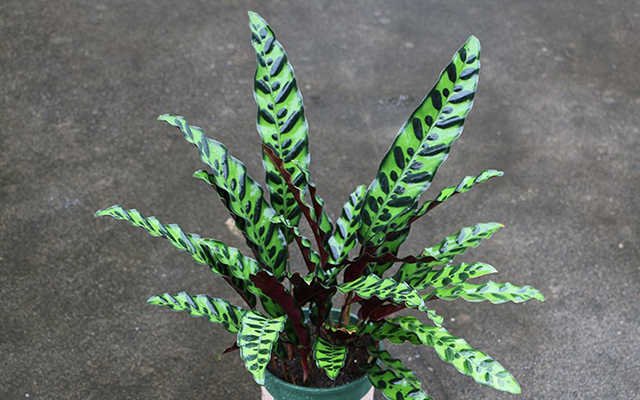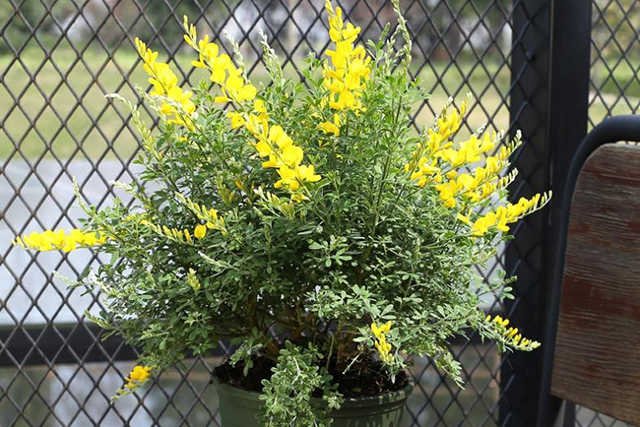1. Which plants are suitable for makingPotted plant
1. Yushu
Yushu, also known as Swallow Palm, is a succulent plant with thick leaves. It is easy to take care of. It is commonly cut to form bonsai. It is important to learn how to trim and set it!
Yushu likes the sun that is sufficient in scattered light, warm and cool environment.
2. Bodhi tree
Bodhi trees are usually called fig trees. It is also an excellent bonsai plant. It is very tenacious plants. It grows fast and has a lot of gas roots. Its shiny heart leaves are its symbol.Intersection
Bodhi trees like warm and humid environments, are not cold -tolerant. They usually have 6 hours of light every day, and cold prevention in winter!
3. Pingzhi Xunzi
Pingzhizi is often grown in the gap of rock cliffs. It is also a semi -deciduous shrub. It is very suitable as a bonsai. It belongs to novice bonsai plants. It can adhere to the durable green, like the sun, and it is more vulnerable.
4. Monkey bread tree
Monkey bread trees have short trunks and swelling roots -shaped trunks. They are very suitable as bonsai. They like warm and cool environments. They are easy to take care of them. They do not need too much management, but they are not cold -resistant.
5. European mountain hair
European mountain hair, this majestic large bonsai has a unique upright style, and the leaves will turn yellow in autumn, but its growth speed is very slow. It likes sufficient sunlight and cannot be exposed to the sun. It should be shaded in summer!
6. Popular
The Yang Yang bonsai is already very rare, it is very easy to take care of, it is difficult to maintain, and the very beautiful bonsai variety. Assuming you are a beginner, this is suitable!
Yang Yang can be maintained indoors, and there are no results in half -yin.
7. Pomegranate
Pomegranate is one of the fruits that many people like. Of course, it can also be used as a bonsai. It has seductive trunks, as well as gorgeous flowers and fruits, which are very spectacular!
8. Sting the cypress
There are many varieties of thorns, as many as 50 types, belonging to evergreen coniferous shrubs, which are very popular with beginners. Of course, many hotels also like to decorate with this plant!
9. Rongshou
Rongshou is a very easy -to -shaped variety. It is very suitable for novice. You can pass it to complete your bonsai manufacturing level!It is still a very attractive variety. It likes warmth and sufficient sunshine environment and cannot be exposed to exposure!
10. Dynamics
Everyone has seen too much in the , and it also proves that it is a more popular bonsai plant. It is also a plant with evergreen in the four seasons. I like to see its low leaves!
11. Japanese maple tree
Japanese maple trees have beautiful leaves and cracked claw -shaped leaves. They are also natural bonsai plants. It has a lot of varieties and can be based on various family layouts.It likes the environment of sufficient sunshine and ventilation.
12. Lagerstroemia
Ziwei is also a great bonsai plant. Its main feature is that there are many branches. The beautiful pink flowers are also very gorgeous. There are also white and purple varieties!
Pay attention to moved to the warm and ventilated place in the interior after the buds of the spring flowers, extend the flowering period!
13. Fujian tea
A great bonsai, many flower buddies like it, suitable for making bonsai of the size. It has shiny leaves. Assume that the temperature is appropriate, its white flower can bloom throughout the year!Of course, there are small white berries that can be appreciated!It likes the sun, the temperature is not high or low, it is not cold!
14.
Elm tree is a relatively rare bonsai plant in my country. It is very spectacular and an ideal bonsai plant. Because it is resistant to trimming, it is easy to make shape!It is easy to raise, you can conform to most of the temperature, but it is not cold!
15. Delta plum
Triangle plum is also a better bonsai plant. Its main feature is rich and colorful, beautiful, and beautiful flowers flying the butterflies flying on the tree.It grows fast and can make various style of style. It likes to stay in an environment of 6 hours a day, which is not cold!
16, dwarf goose palm firewood
Dwarf goose palm is a very popular indoor bonsai. It is easy to grow, drought resistance and difficulty to grow to death, which makes it a better novice bonsai plant.It is also a variety that is very suitable for shaping the shape. The environment that likes bright scattered light can grow in the semi -yin.
17. Indian banyan tree (banyan tree.
The banyan bonsai is a very large tree species. As a bonsai, it is large or small!Very wooden trunk, plus various gas roots, looks wonderful!
It likes a warm and cool environment, and it also likes the sun in the afternoon, is it a bit literary!

18. Desert Rose
The succulent varieties of the root roots are very chic bonsai plants, have swollen stems, shiny leaves, and beautiful and beautiful flowers. As a bonsai, it is better. I like the sun with sufficient sunlight. Of course, it cannot protect the cold in winter!
19, olive
Olive bonsai is easy to take care of. It is still very strong. As a bonsai, it is a suitable choice. It has Smooth trunk and a great branch structure, making it a spectacular bonsai.It is more suitable for indoor growth, of course, it is a bit scattered!
20. Rhododendron
The azalea bonsai is also born. Its bonsai is very moving, the flowers are very beautiful, and the tree shape is also very good.Like slightly acidic soil and sufficient sunlight!
21, guava
Guava is not a very popular bonsai plant, but it cannot be buried as a talent for bonsai plants. It is very easy to raise and complicated. Suppose each of the small fruits is better, it looks better!
It is a tropical plant and likes sufficient sunlight. The temperate region can only be kept indoors in winter!
22, pine
The vast sees of the pine bonsai. It is an indispensable part of the bonsai world. It has the charm of the oriental, but it is not suitable for novice.People like it very much, and each of its classic shapes are too late!Like the rough trunk and bark, make them look quaint!Like to show ventilation environment!
2. Suitable for bonsai trees
Commonly, the trees that are more suitable for bonsai are mainly, Su Tie, Ginkgo, Money song, Black song, Five Needles, Jinsong, Bai Bai, Fujian Bai, Pyrabranete, Luo Han Bai, bamboo board Shan, , elm, elm, Pu, banyan, Xiaoyu, Begonia, Nantianzhu, Jiwu, fire Estate, Red Leaf, Cherry Blossom, Yu Li, Wisteria, Jin Chicken, Jiuli Xiang, winter Qing, Five color Russia, triangular weapon, chicken feet, birdmeal, Ben Hibiscus, sycamore, Fujian tea, wolfberry, June snow, bamboo, mullet, Ruixiang, Hu Shizi, small leaf clove, fortune tree, high and so on.
Our common family bonsai is mainly including ginkgo, plum blossoms, wax plums, black pine, Luo Han pine, Yingchun, Bauhinia, Begonia, Qian Pine, True Bali, Peacock Bald, Langshi Begonia, Xifu Begonia, Lagerstroemia, Lagerstroemia, Lagerstroemia, Lagerstroemia, Lycium barbarum, wolf Bone, south Tianzhu, white wax, Fujian tea, red maple, ten contributions, Huang Yan, Fufang vine, Nan snake vine, Buddha belly bamboo, phoenix bamboo, purple bamboo, brown bamboo, Wenzhu, Zhuzhu, Zhu, Zhu, Zhu, Zhu, Zhu, Zhu, Zhu, Zhu, Zhu, Zhu, Zhu, Zhu, Zhu, Zhu, Zhu, Zhu, Zhu, Zhu, Zhu, Zhu, Zhu, Zhu, Zhu, Zhu, Zhu, Zhu, Zhu, Zhu, Zhu, Zhu, Zhu, Zhu, Zhu, Zhu, Zhu, Zhu, Zhu, Zhu, Zhu Apple, pear, peach, bergamot, camellia, silk cotton and wood, silk cotton and wood, Ruixiang, osmanthus, drunk wood, rhododendrons, gold marbles, Su Tie, banyan trees, southern yews, chrysanthemums, tiger ear grass, small , yang Yang, Yuanbao maple , fire Estate, Five Needles, Tongue Tongue Luo Hansong, Jinsong, , Wutio, and so on.



